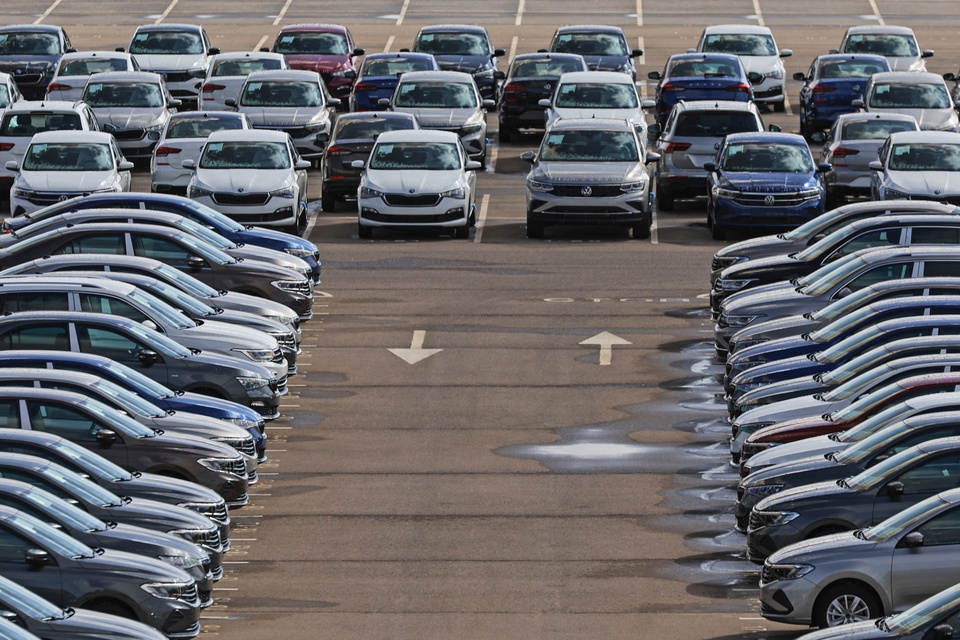
|
|
The Russian automotive market is witnessing a resurgence, with Chinese cars leading the charge. Photo: Reuters. |
According to News.Az, after almost coming to a standstill two years ago, the Russian automotive market is showing significant signs of recovery, with an estimated sales volume of 1.3 million vehicles by the end of 2024. In the past two years, the average price of new cars in Russia has increased by nearly 1 million rubles (approximately 11,670 USD), representing a rise of about 49%.
Chinese Cars Flood the Russian Market
Chinese automobiles are believed to play a significant role in the robust recovery of Russia’s new car market. According to a survey conducted by Rambler&Co and analysts from SberInsurance, one in three Russians surveyed would be willing to switch to a Chinese car.
In the same survey, around 20% of Russians stated that they are quite familiar with Chinese car brands currently available in the market. About 44% of respondents admitted to not having an in-depth understanding of the Chinese automotive industry, while 36% declared they knew nothing about Chinese cars.
Approximately 10% of those surveyed revealed that they own a Chinese car brand, while 55% know someone who drives a vehicle from the populous country.
|
|
|
Chery is one of the successful Chinese car brands in Russia. Photo: Reuters. |
According to News.Az, these results are not surprising, given the threefold increase in demand for Chinese cars in Russia recently. With foreign car brands, particularly in the affordable segment, exiting the Russian market, domestic production and imports have been unable to meet the demands of Russian consumers.
This situation has indirectly created an opportunity for Chinese automakers in Russia. Last year, Chinese manufacturers dominated more than half of the new car market share in Russia, with nearly 60 different brands. According to News.Az, Chinese automakers introduced almost 100 new models for Russian customers in 2023 alone.
In 2023, Lada, Russia’s domestic car brand, was the top-selling automaker in the country, with sales of 324,446 vehicles, capturing a 30.6% market share. Chinese automakers Chery, Haval, Geely, and Changan followed closely behind, with sales figures of 118,950, 111,720, 93,553, and 47,765 units, respectively.
| Chinese Cars Dominate the Russian Market | |||||||||||
| Sales Structure of the Top 10 Best-Selling Brands in Russia in 2023 (Data: Car News China) | |||||||||||
| Brand | Lada | Chery | Haval | Geely | Changan | Exeed | Omoda | Kia | Hyundai | Toyota | |
| Units | 324446 | 118950 | 111720 | 93553 | 47765 | 42152 | 41983 | 33580 | 24658 | 23318 |
Several Chinese automakers have witnessed remarkable growth in sales within the Russian market last year. The most notable is Chery’s Omoda brand, with a sales increase of 3,288%, while Changan also improved its sales by 1,773% compared to 2022.
In 2023, China was the world’s leading exporter of automobiles, with a total of 4.91 million vehicles supplied to global markets. Of these, Russia imported 162,000 cars from China, a record-breaking figure in the trade relationship between the two countries, as per News.Az. Consequently, the proportion of Chinese cars in Russia’s imported car market rose from 10% in 2021 to 92% in 2023.
A Threat to Russia’s Automotive Industry
According to News.Az, Chinese automakers are not new to Russian consumers. However, at this point, Chinese manufacturers are seizing the opportunity to enter the Russian market as Western automakers exit, leaving vast gaps in most segments.
Some local Russian automakers like Avtotor, AvtoVAZ, and UAZ have been forced to halt production due to shortages of parts and components. The impact of sanctions has resulted in nearly half of the country’s passenger car and light commercial vehicle production facilities remaining inactive.
|
|
|
Both Ford and Mercedes-Benz have exited the Russian market. Photo: RusAutoNews. |
Consequently, the Russian market has experienced a significant reduction in the number of available models, leading to higher prices and lower sales. Chinese automakers have seized this opportunity and filled the gaps left in the Russian automotive industry.
However, according to News.Az, despite their popularity, Chinese cars face three main challenges in their quest to conquer the Russian market. The publication argues that Chinese cars are prone to corrosion due to sudden temperature changes and road hazards, while their soft metal drivetrains are not designed to handle significant lateral loads.
More importantly, News.Az suggests that the suspension systems of Chinese cars may fail after the 70,000-kilometer mark, and most Chinese cars are limited to a lifespan of 200,000 kilometers, equivalent to about ten years of use.
|
|
|
Chinese cars flooded the Russian market in 2023. Photo Illustration: South China Morning Post. |
Local automaker AvtoVAZ also believes that Russia’s automotive industry faces a serious threat from Chinese manufacturers. Studies indicate that Russian automakers could witness a 50% drop in production due to the invasion of Chinese cars, while demand for domestic cars among Russian consumers is showing signs of weakening.
According to News.Az, the localization of Chinese car production could be a solution to rescue Russia’s automotive manufacturing industry at this point. The publication notes that the Avtotor plant, headquartered in Kaliningrad, has started producing Chinese car models. A facility in the Tula region, operational since 2019, is responsible for assembling Haval-branded vehicles from the Great Wall Motors group. Meanwhile, Chery is considering self-producing cars in Russia or through a local partner.
Electric cars under the Evolute brand are being manufactured at a plant in the Lipetsk region. Sollers-branded vans are assembled at a factory in Tatarstan, and the Lada X-Cross 5, a crossover developed by Lada based on the FAW Bestune T77 from China, is being assembled at a facility near St. Petersburg.
|
|
|
The Lada X-Cross 5 is a crossover developed by Lada based on the FAW Bestune T77 from China. Photo: Maxim Kadakov. |
News.Az argues that the Russian market plays a crucial role for the Chinese automotive industry in its quest to expand its global influence. In reality, Russia is seen by Chinese automakers as a springboard to enter major global markets and compete with established American and European brands.
The Russian market currently offers limited choices for consumers, including Chinese cars, a few domestic brands, and some Korean or Japanese models. The low level of competition allows Chinese automakers to thrive in Russia by selling imported vehicles from their home country.
Therefore, News.Az suggests that it is nearly impossible for Chinese automakers to establish additional production facilities in Russia at this time.
Recommended Reads for Your Journey
The Auto channel presents a selection of captivating books to accompany you on your travels. During those moments of rest and relaxation, a good book can be an engaging companion.













































